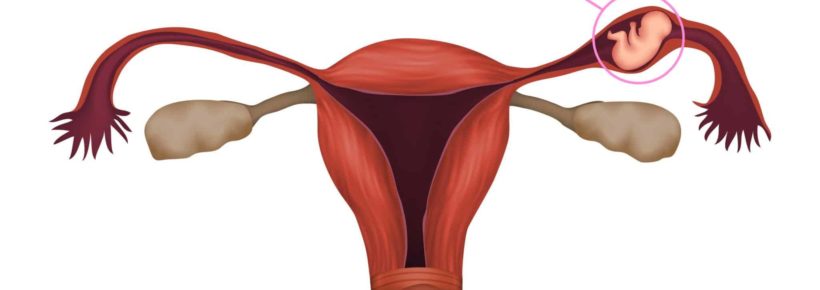Nothing exposes the dishonesty and corruption of the abortion industry more than the “mental health” exception for abortion. Abortionists routinely abuse this exception, no matter how carefully and precisely lawmakers draft it.
This kind of deception has been going on as long as there have been laws against abortion.
Abuse of the “Mental Health” Exception
Referring to those states that legalized abortion before Roe v. Wade, Dr. E. James Lieberman said, “In recent years, 90% of all legal abortions performed in the United States were justified on psychiatric grounds, since there are few physical conditions which stand in the way of normal gestation and parturition.”1 Dr. Benjamin N. Branch confirmed this number when he revealed, “Until June 1970, almost 90% of abortions in New York were in fact certified as necessary to protect emotional health.”1
When government reporting requirements force abortionists to be honest, we find that abortions performed to preserve women’s mental health are very rare.
From 1996 to 2020, the states of Florida, Louisiana, Minnesota, Nebraska, South Dakota and Utah compiled data on the reasons that women obtain abortions. Of the 2.4 million aborting women surveyed, only 1.28% replied that they were having abortions to protect their mental health.
The Slippery Slope: Third-Trimester Abortions to Attend Rock Concerts
As with the “physical health” exception, it does no good whatsoever for pro-life legislators to attempt to strictly define a “mental health” exception in the law, because abortionists will simply manipulate it to cover all abortions.
When the Kansas State Board of Healing Arts recently investigated partial-birth abortionist George Tiller’s abortion practices, it found that he did third-trimester abortions on teenage girls for extremely trivial reasons―because they were anxious over missing rodeo competitions and basketball practices, or wanted to attend rock concerts and proms.
Kansas legislators had done their best to draw up a very strict “mental health” exception for abortions, which could only be done if the continuation of the pregnancy would result in “substantial and irreversible impairment of a major physical or mental function.”
In order to get around the requirement that a second physician confirm this diagnosis, Tiller hired laser hair removal technician Ann Kristin Neuhaus, who rubber-stamped every single request that was brought before her without ever meeting with any of the girls “needing” abortion. Neuhaus, in fact, used a computer program called Psychmanager Lite to automatically fill out the required forms days or even weeks after the abortions were actually performed, and received $350 for each “consultation.”2
It is revealing that Tiller and Neuhaus claimed that all of their patients were suffering from “severe” mental problems, but did not refer a single one of them to a psychiatrist or a psychologist.
So much for “caring for the health of women.”
Because of this gross abuse of the mental health exception, the Kansas legislature removed it from the books in 2011 over the vocal opposition of pro-abortion groups, and Neuhaus lost her medical license in February 2012. Naturally, she complained that she was a victim of religious persecution and “abortion politics.”2
International Evidence
Widespread exploitation of the “mental health” dodge is not a purely American phenomenon, because abortionists are the same the world over.
For example, of the 1.9 million abortions performed in England and Wales during the ten-year period 2002-2011, 98.3% were for “mental health reasons” for both the woman and members of her family.3 Under British law, the person who makes a determination of mental problems is not a psychiatrist, but the abortionist himself, who will lose money if he judges the woman to be mentally healthy!4 Perhaps this explains why abortionists labeled 100% of the abortion justifications for “mental health” with the conveniently vague terms “neuroses” or “depression,” something that no reputable psychiatrist or psychologist would ever do.
Professor Myre Sim, lecturer in Psychiatry at Birmingham University, recognized that abortionists are certainly not qualified to make psychiatric evaluations: “I was able to demonstrate successfully that psychiatry was competent to deal with all the psychiatric hazards of pregnancy, and that the day that a psychiatrist required a gynecologist to treat his patients has not arrived.”4
In England, land of the free and easy “lunchtime abortion,” teenagers have as many as seven each―almost always under the “mental health” exception.
What about Suicide Threats?
One special aspect of the “mental health” exception for abortion is when women threaten suicide. Pro-abortionists, as always, emphasize the hardest of the “hard cases,” and, when everything else fails, insist that pregnant women who cannot get abortions will kill themselves in droves.
But pro-abortion feminist writers themselves have revealed that this assertion is a lie.
The authors of A Woman’s Book of Choices admit, “Another pre-Roe standby that many women employed successfully was threatening or feigning suicide…. sympathetic doctors readily used any excuse, no matter how flimsy, to do what came in late pre-Roe days to be called ‘therapeutic’ abortions.5
This book also shows women how to lie and be dramatic during abortion interviews:
During the interview, weep, show anger, fear, disgust, outright destructiveness of your clothing or small objects, say, the ashtray on his desk which can be broken on the floor or against a wall. Don’t overdo this. You will be billed for the broken things later! Don’t break the doctor’s head. This is a “no-no”…. How’s your attention span?…. You can’t seem to concentrate on anything for more than a couple of minutes…. Be dull and very sad. Cry a bit. Just sit in silence, and make him repeat questions as though you hadn’t heard a word…. And now for the Manic Scene: Just like the opera, ladies! Brighten up, beam like a sunrise…. let your thoughts gallop wildly…. your speech flows like the Danube in flood time…. you might try taking off your shoes, kicking them all the way across his office, wriggling your toes. Then say, “That feels so good, I think I’ll take everything off.”5
Countless experts in the field of maternal health―including many abortionists―have concluded that the risk of women committing suicide because of their pregnancies is minuscule. These experts have found that almost all pregnant women who threaten to commit suicide do so either to obtain an abortion or to attract attention to themselves.
One of the most rabid and outspoken abortionists is Jane Hodgson, who edited a book entitled Abortion and Sterilization: Medical and Social Aspects, which frankly admitted that pro-lifers are correct in opposing “mental health” exceptions for abortion. The book made the crucial point that threats of suicide during pregnancy are almost never associated with the existence of the pregnancy itself, but with some other stress:
The critics of liberal abortion legislation have rightly pointed out that granting abortion for reasons of `mental health’ is vague and constitutes a way of justifying abortion on demand. The term ‘mental health’ is indeed vague, and often serves as a cloak for a variety of indications to induce abortion…. [Physical] health is also a vague term; the vast literature relating to difficulties in measuring the health status of individuals and populations provides no consensus on how it may be defined in quantitative terms.
No claim can be made for a cause-and-effect relation between pregnancy and suicide. It appears that in the majority of suicide attempts during pregnancy, the suicidal behavior was unrelated to the pregnancy itself. Both the pregnancy and the suicide attempts seem to stem from stressful situations or internal conflicts, and they probably represent attempts to gain attention or to punish others.6
Indeed, over the past half century, dozens of medical studies and the personal experiences of many abortionists have shown that women often threaten suicide in order to obtain abortions, but almost never carry out their threats. These studies have also found that pregnant women are less likely to commit suicide than women who are not pregnant. See the endnotes for a long list of testimonies on this fact.7
Conclusion
We must keep in mind that abortionists are totally committed to their cause, which is making lots of money by killing preborn people. Is it any wonder, then, that they would stretch any exception to achieve what is essentially abortion on demand?
A “mental health” exception for abortion always becomes just another part of the machinery of corruption and dishonesty that is characteristic of the abortion industry.
This article was originally published in May 2017 and was most recently updated in January 2024.
+ Endnotes
[1] James Lieberman, M.D. “Abortion Counseling,” and Benjamin N. Branch, M.D. “Counseling in Abortion Services.” Sarah Lewit (Editor). Abortion Techniques and Services: Proceedings of the Conference, New York, N.Y., June 3-5, 1971. Amsterdam: Excerpta Medica, 1972.
[2] Phill Klein. “The Sebelius, Morrison and Six Flim Flam Flummox Defense of Dr. Tiller and Planned Parenthood.” Renew America, June 21, 2011 [see this article for a detailed explanation of the history of the disgraceful machinations by highly-placed government officials to protect Tiller, Neuhaus and Planned Parenthood]; Jeremy Kryn. “Girls Cleared for Tiller’s Late-Term Abortions for Shoddy ‘Mental Health’ Risks.” LifeSite News, September 23, 2011; Steven Ertelt. “Abortion Doc Stripped of Medical License in Kansas.” LifeNews.com, June 22, 2012; Kathleen Gilbert. “Doctor’s License Stripped for Rubber Stamping Tiller Partial-Birth Abortions on Teens.” LifeSite News, June 22, 2012.
[3] The grounds given are as follows: “(C) The pregnancy has not exceeded its twenty-fourth week and that the continuance of the pregnancy would involve risk, greater than if the pregnancy were terminated, of injury to the physical or mental health of the pregnant woman (section 1(1)(a)),” and “(D) The pregnancy has not exceeded its twenty-fourth week and that the continuance of the pregnancy would involve risk, greater than if the pregnancy were terminated, of injury to the physical or mental health of any existing children of the family of the pregnant woman (section 1(1)(a)).” It is understood that the “mental health” exception accounts for almost all of these cases.
[4] Professor Myre Sim, lecturer in Psychiatry at Birmingham University. Association of Lawyers for the Defence of the Unborn, London, Newsletter No. 29, Spring 1986.
[5] Lana Phelan and Pat Maginnis. The Abortion Handbook [North Hollywood, California: Contact Books], 1969, pages 111 to 115. Also quoted in Rebecca Chalker and Carol Downer. A Woman’s Book of Choices: Abortion, Menstrual Extraction, RU-486 [Four Walls Eight Windows Press], 1992, pages 35 and 43.
[6] Irene Figa-Talamanca, “Abortion and Mental Health.” In Jane E. Hodgson (Editor). Abortion and Sterilization: Medical and Social Aspects [New York City: Grune & Stratton], 1981, pages 181 to 208.
[7] Just a few examples of abortionists and other experts finding that women threatening suicide if they do not have an abortion almost never carry out their threats, and that pregnant women are much less likely to commit suicide than women who are not pregnant:
(a) Reformed abortionist Bernard Nathanson, M.D., said:
Women do not kill themselves and never have as a result of being pregnant. Interestingly, when we were pushing abortion―we, meaning the high command of the National Abortion Rights Action League, including myself, [Larry] Lader, and [Betty] Friedan, in the late 60s, we asked the Medical Examiner of New York City to go through his files to discover, to give us a figure on how many women who were pregnant had killed themselves, were suicides as a result merely of being pregnant…. The Medical Examiner was unable to give us even one case, one case, where a woman had clearly committed suicide because she was pregnant―this was in New York City―so we were chagrined and never, of course, publicized that finding.
Bernard Nathanson, M.D., testimony at the Borowski hearing, Regina, Saskatchewan, May 16, 1983, page 409.
(b) Researchers wrote this in a textbook entitled The Psychological Aspects of Abortion:
Another claim of the pro-abortionists was that an unwanted pregnancy was a common cause of suicide….[Research revealed that] in a twelve year period in Birmingham, England, a city with a population of 1,250,000, there was only one case of suicide in a pregnant woman and in her case the question of abortion was never raised…. A pregnant woman is less likely to commit suicide than her matched sister who is not pregnant. Rather interestingly, once she has given birth, the risk of suicide rises to the average.
Sim and Neisser, “Post-Abortive Psychoses.” The Psychological Aspects of Abortion, Mall and Watts, editors (Washington, D.C.: University Publications of America), 1979, pages 11 and 12.
(c) An article in the December 1966 issue of the Ohio State Medical Journal concluded, “This is an oft-repeated fallacy. Suicide among pregnant women is extremely rare. Several well-controlled studies have shown this conclusively. The State of Ohio had only two maternal suicide deaths between the years 1955-1963.” (“Maternal Deaths Involving Suicide.” Ohio State Medical Journal, December 1966, page 1,294)
(d) A Swedish study found that 62 of 344 (18%) of the women who were refused abortion threatened suicide, but not one of these 62 women even attempted suicide. (A. Geijerstam. In Abortion in the USA, Mary Calderone, editor. [New York City: Hoeber-Harper Publishers], 1958)
(e) In 1971, a team of doctors published an article in the Journal of the American Medical Association asserting the following:
It would appear that the more serious the psychiatric diagnoses, the less beneficial was the abortion…. As might be expected, chronic characterological neurotic or psychotic conditions are not resolved by abortion, which is in essence a form of environmental manipulation.
Ford, et.al., “Abortion: Is It a Therapeutic Procedure in Psychiatry? Journal of the American Medical Association, November 1971, page 1,177.
(f) At a 1955 conference on induced abortion held by the International Planned Parenthood Federation (IPPF), Dr. Mary Steichen Calderone, Medical Director of the Planned Parenthood Federation of America (PPFA), asked, “But is it not true that fundamentally most therapeutic abortions are actually being granted because of socioeconomic and humanitarian reasons that are masked as psychiatric or other medical reasons? I think this is an important point.” (Mary Calderone, M.D., Ernest Kolb, M.D., Paul Lidz, M.D., and Howard C. Taylor, Jr., M.D., Director of Obstetrical and Gynecological Services at the Columbia-Presbyterian Medical Center in New York City, at the 1955 conference on induced abortion held by the International Planned Parenthood Federation. Quoted in Mary Calderone, M.D. [editor]. Abortion in the United States [New York City: Paul B. Hoeber, Inc.], 1956.)
(g) Also at this conference, Dr. Ernest Kolb, Director of the New York State Psychiatric Institute, remarked:
There is an interesting report from Sweden in which three hundred forty-four women were refused legal abortion and sixty-two of these women indicated they would commit suicide. Actually, however, none of them did. I think this is something that anyone in psychiatric practice would recognize. The threat of suicide is used many times to intimidate and to obtain an end in relation to the psychiatrist as well as to families.
Calderone, Abortion in the United States, op.cit.
(h) Also at this conference, Dr. Kolb asked Dr. Milton Helpern, Chief Medical Examiner of New York City, “Do you have a figure on the percentage of women who at suicide were found [by autopsy] to be pregnant?”
Dr. Helpern replied:
There is only a small number of suicides in women in which we find pregnancy…. I have here some figures on suicide. Among women of childbearing age, fourteen to fifty, it is about the same as in the total female population, 5.5 per 100,000. In 1953 in New York City the incidence of suicide among pregnant women was .55 per 100,000 [i.e. one-tenth the rate in the general population].
Calderone, Abortion in the United States, op.cit.
(i) A few years later, Dr. Alan Guttmacher recalled a conversation he had with Dr. Helpern in his book Babies by Choice or by Chance: “Dr. Milton Helpern, the experienced Chief Medical Examiner of New York, has declared that in the last quarter century he can scarcely recall a single autopsy on a death by suicide which revealed pregnancy.” (Alan Guttmacher, M.D. Babies by Choice or by Chance [Garden City, New York: Doubleday & Company, Inc.], 1959, page 186)
(j) Dr. Howard C. Taylor, Jr., M.D., Director of Obstetrical and Gynecological Services at the Columbia-Presbyterian Medical Center in New York City, said:
Dr. Helpern, about the frequency of suicide in pregnancy to which you have referred, I think it has been shown that the rate of suicide among pregnant women is considerably lower than among nonpregnant women of childbearing age. This is perhaps not a complete answer, but, at any rate, it appears that suicide as a result of pregnancy must be very rare indeed. I say this in the fact that for the last three years the threat of suicide has been at our hospital the principle psychiatric indication accepted.
Calderone, Abortion in the United States, op.cit.
(k) Finally, at the same conference, Dr. Paul Lidz described how abortionists use an alleged suicide risk as rationalization for performing an abortion when there is no legitimate reason for doing so:
Let us be frank about this. When the psychiatrist says that there is a suicidal risk, in many instances he does not mean that at all, but feels that there are strong socioeconomic grounds for a therapeutic abortion. Since the only ground for abortion in many states is if it is felt there is threat of death, suicidal risk is thus established as the only legal way out of the situation.
Calderone, Abortion in the United States, op.cit.
(l) Most significantly, Alan Guttmacher, M.D., the former President of the Planned Parenthood Federation of America, described how rare suicides are among pregnant women when he found the following:
Fifty-seven, or 39 percent, of the abortions were performed for psychiatric reasons. Most of these patients threatened suicide, to be sure, but it is known that pregnant women threatening suicide infrequently carry out the threat. Furthermore, all 57 could have been placed in protective custody throughout their pregnancy, safe in a psychiatric institution. It cannot be said, then, that therapeutic abortion was strictly a lifesaving measure in all, or even most, of the 57 cases.
Alan Guttmacher, M.D. Babies by Choice or by Chance (Garden City, New York: Doubleday & Company, Inc.), 1959.
Related Content
Dr. Brian Clowes has been HLI’s director of research since 1995 and is one of the most accomplished and respected intellectuals in the international pro-life movement. Best known as author of the most exhaustive pro-life informational resource volume The Facts of Life, and for his Pro-Life Basic Training Course, Brian is the author of nine books and over 500 scholarly and popular articles, and has traveled to 70 countries on six continents as a pro-life speaker, educator and trainer.













I take psychiatric meds for a mental illness. My doctor told me if I were to get pregnant I would need to consider terminating the pregnancy OR stop taking my medication during the pregnancy.
You don’t present a solution for people who DO suffer from mental illness for which staying on medication during pregnancy would cause significant undue harm to a baby carried to term vs stopping medication which could inadvertently cause harm to myself or others & would present situation whereby I also would be unable to work to support myself.
Since you think the government should make these decisions for me – tell me if I should stay on psychiatric medication(s) (which the FDA has identified as harmful and/or unknown if harmful to an unborn fetus)?
Am I supposed to continue taking drugs while pregnant bc the government won’t allow mental illness as a reason for a legitimate abortion knowing the danger the drugs can cause?
Or do I stop taking medication that prevents me from committing suicide?
Which is more important – my health, safety & well being or that of a mass of cells the size of a seed that will die anyway if I die?
In your effort to assume that everyone is out there just to “cheat the system” you’ve forgotten to account for the actual real-world scenarios which those clauses were meant to protect.
It’s difficult enough finding help in this country for mental illness. Now I need the government dictating whether or not I can take meds or should purposely carry a baby to term knowing it will need a lifetime of medical care the government doesnt want to oay for bc none of this is actually about life – it’s about using women as pawns for political gain.
Thank you for your valid questions. Actually, Church teaching is quite clear on this. If medications are required to maintain any aspect of health, they should be taken by all means. If they would be dangerous to a pregnancy, then the Church states that sexual activity should be only during the non-fertile parts of the month. This is identifiable through Natural Family Planning charting. If you have any difficulty locating NFP resources, let us know. God bless.